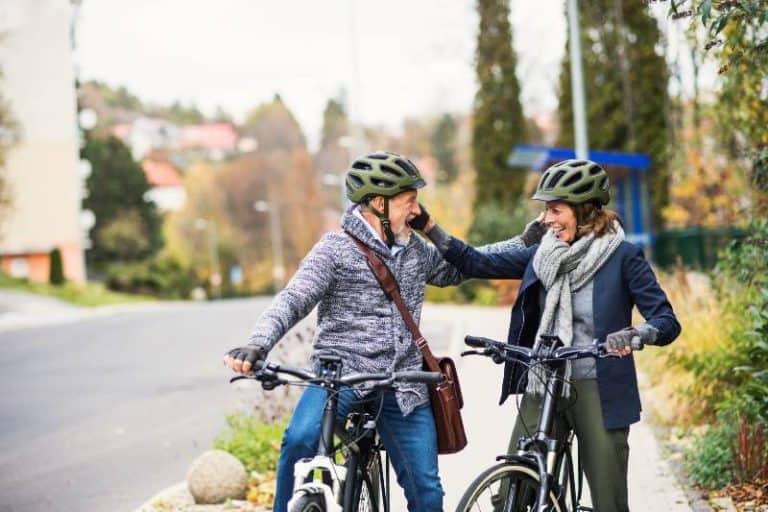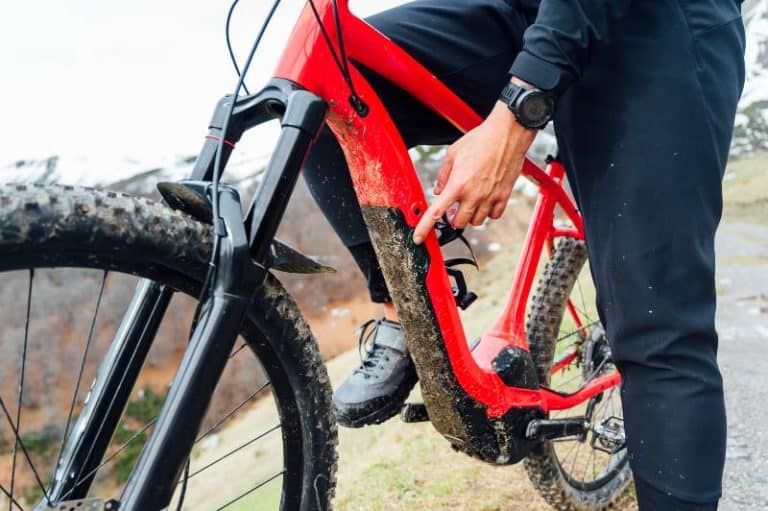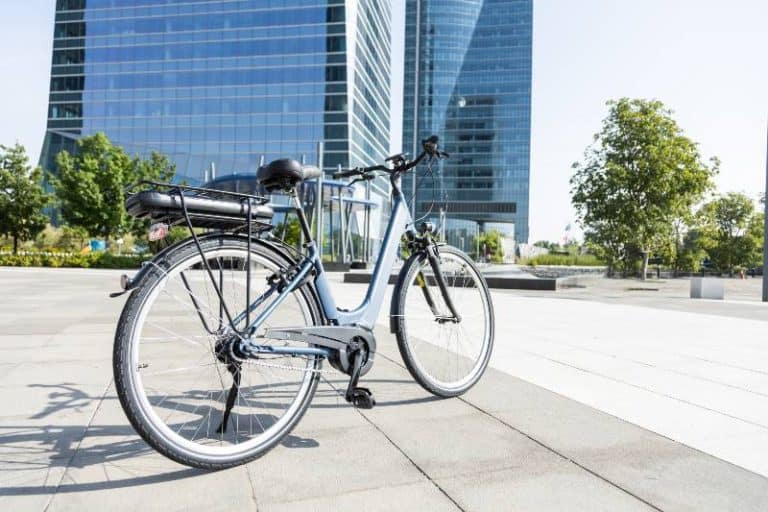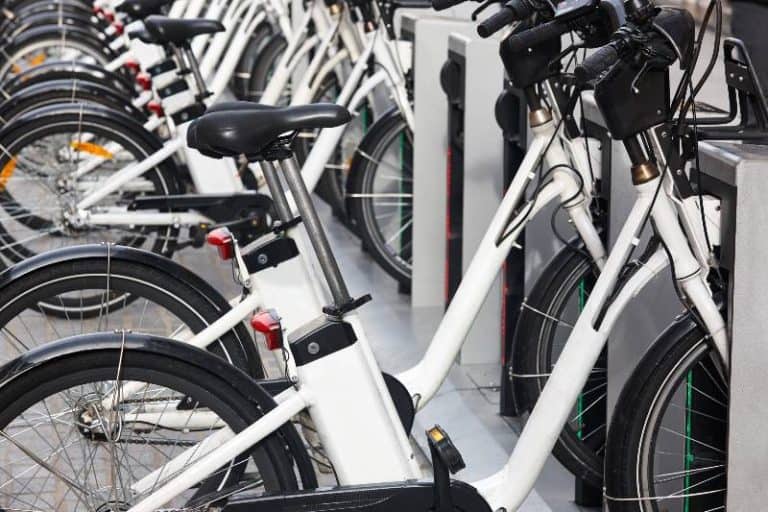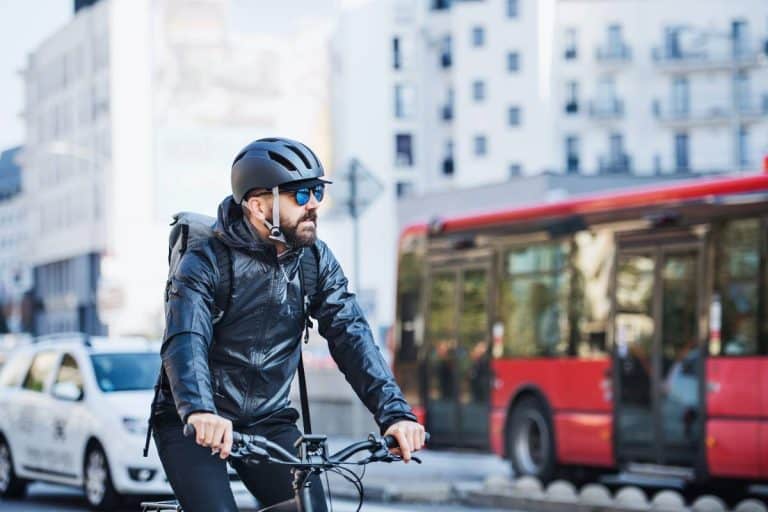The Truth About Ebikes: Top 12 Misconceptions Busted!
Electric bikes (known affectionately as e-bikes) are becoming increasingly popular – and with good reason. They provide an enjoyable and low-impact exercise option, perfect for people of all ages and abilities. In this blog post, we’ll be busting some of the top misconceptions surrounding e-bikes. Through our unique use of facts and figures, we’ll debunk each of these Top myths about ebikes or misconceptions once and for all – leaving you better informed about why e-bikes are actually a great choice!
Ebikes are great for climbing hills, but they can also be used for other activities like riding in the city and even riding on flat ground or even indoors. The truth about e-bikes is that they’re not just for getting around town. They’re also an excellent way to get in shape, burn calories and lose weight. In fact, they can make a great tool for helping you meet your fitness goals!
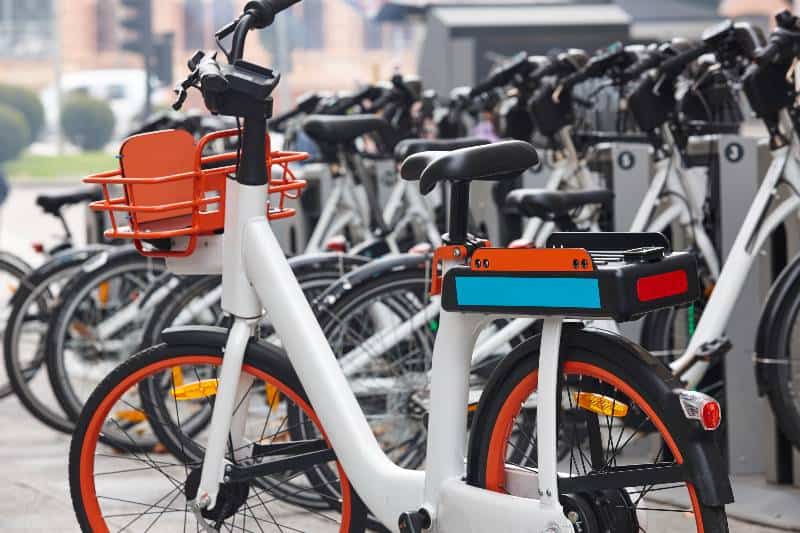
Key Takeaways
- You can’t ride an e-bike if you’re under 16 years old—but that age varies from state to state; check your state laws for more details about your specific area’s rules for e-bikes and riders.
- There are lots of myths about e-bikes that prevent people from making informed decisions.
- E-bikes don’t make you any less healthy than riding a regular bike would. In fact, they provide health benefits and assistance for people with physical limitations.
Myth #1: E-bikes are only for older or less fit people
E-bikes can benefit all types of riders
E-bikes can benefit all types of riders, from casual rider to experienced commuter. They are also a great way to stay fit and healthy as you get older, or if you have a physical limitation. E-bikes can help riders maintain an active lifestyle, whether they are looking for increased comfort or improved performance. It can also reduce the strain on your knees and back because you don’t have to pedal as hard. You will be able to keep pedaling for longer periods of time which will help you burn more calories and lose weight.
Additionally, it helps to improve your balance because it has a much wider range of motion when compared to a regular bike, so you won’t get as many injuries from falling off your bike while riding it. The result is an overall improvement in the quality of life for both the rider and the environment.
Testimonials from diverse e-bike riders
There are several testimonials from diverse e-bike riders, visit this website here to learn more.
The best part about the e-bike is that it can be used by anyone. It’s a great way to get around town and enjoy yourself without having to worry about gas, parking, or traffic jams. Plus, you can save money on gas and repairs!
The real demographic of e-bike riders
The real demographic of e-bike riders is not the stereotypical image of a hipster with a beard and skinny jeans. It’s a much more diverse group – including people who are older, have families, and don’t ride as frequently as others. As a matter of fact, it is found out that the average age of an e-bike rider is 40- 70 years old. However, people who are interested tend to be much younger as 25-35 years old and can use an e-bike.
Myth #2: E-bikes are expensive
E-bike prices vs traditional bike prices
The e-bike is a bike that uses electricity to assist the rider in pedaling. The electric motor provides assistance and propels the rider forward at a set speed depending on how hard they pedal. E-bikes can be used for long rides and in places where there are no sidewalks to walk on. The cost of an e-bike depends on the type, size, and quality of the bike you want. There are many different brands of bikes that range from $1,000-$5000, with some going up to $10,000.
You will have to consider your budget when deciding which one is right for you. On the other hand, normal bike prices range from $200- $2,000 depending on what type of bike you will purchase. As you can see, the price comparison is really evident but compared to the traditional bike, e-bikes still have a lot of benefits not just on the physical body but on the environment as well.
Long-term cost savings of e-bikes
In the long run, e-bikes are more cost-effective than traditional bicycles. The biggest reason is that they allow people to ride farther and faster, resulting in less time spent commuting and more time enjoying daylight hours.
In addition to saving money on gas, e-bikes also save money on maintenance costs. Because e bikes require lots oil changes or tire replacements, you won’t have to pay for those services when you ride an e-bike.
As a matter of fact, it can save you money as much as $ 5,094 a year according to Tern compared to when you own a car that requires costly maintenance. In terms of charging your e-bike, the cost is around 7 cents in most countries around the world which is much cheaper.
Government incentives programs
Incentives are a big part of the biking scene. The government offers rebates for electric bikes, which can help offset the upfront cost of an e-bike. These rebates vary by state, but many states e bikes offer up to $500 in incentives on an e-bike and California is one of them.
The federal government offers tax credits for qualifying purchases of e-bikes, as well as special registration plates for electric bikes.
Myth #3: E-bikes are only for city riding
Types of e-bikes available
1. Type/Class 1 E-bike
The Type 1 E-bike is a pedal-assist electric bike with a maximum speed of 20 mph. It has a 750W motor that provides 10 Nm of torque and can reach speeds up to 20 mph. The Type 1 E-bike is an excellent choice for commuters who want to get around town without breaking a sweat.
2. Type/Class 2 E-bike
The Class 2 E-bike is throttle-assisted. This means that the rider has to pedal hard to get the bike up a hill, but once it’s going, the motor does all of the work. Class 2 is an ideal bike for people who want to cycle for exercise and recreation, or for commuting short distances. It’s also a good choice for anyone looking for a low-cost way of getting around. This also has a maximum speed of 20 mph.
3. Type/Class 3 E-bike
The Class 3 e-bike just like Class 1 is pedal-assisted however it is also called as a speed-assisted electric bicycle that can reach speeds of up to 28 mph. This class 3 e-bike has a maximum speed of 28mph, which is fast enough to ride on the busy streets of major cities and towns. It features a powerful 750W motor and powerful battery pack that provides sufficient power for long distance riding.
Trail access and e-bike regulations in rural areas
According to the U.S Department of Agriculture, e-bikes are allowed to bike on motorized trails, roads, and grasslands and all classes or types of e-bike are allowed. However, the speed limit should be observed as well as other rules that are imposed by the government.
Myth #4: E-bikes are not environmentally friendly
E-bikes can reduce carbon emissions
E-bikes are a great way to get around town, but they can also help reduce carbon emissions. E-bikes can be powered by electricity, which means they don’t produce any carbon emissions. They also have no fuel to replace, so they never need to be refilled or refueled—which makes them an environmentally friendly choice for commuting.
The carbon footprint of e-bikes is also much smaller than that of cars and buses. When you compare the energy required to power an electric bicycle to that required to power a car or bus over a given distance, you’ll see that the energy consumed by electric bicycles is much less than either of those options.
Environmental impact of e-bikes vs. traditional cars
The environmental impact of e-bikes can be reduced by designing them with an electric assist. This means that the motor is not powered by combustion, but instead by an internal battery. This means that less fuel needs to be burned in order to move a bike up hills. Less fuel means fewer emissions and less CO2 being released into the atmosphere.
E-bikes also have smaller carbon footprints than other types of two-wheelers because they are generally easier on the environment than motorcycles or scooters. As a matter of fact, using an e-bike will lessen carbon emissions by 50%.
Aside from that, it’s quiet, easy to ride, and won’t tire you out. The main reason for this is that you don’t have to pedal as hard. The electric motor helps you out by providing energy when you need it most and gives you the extra push when you’re tired or have run out of steam.
Therefore, e-bikes reduce noise pollution. This means that they are good for people who live in cities where noise pollution is an issue (which can cause health problems).
Contrary, conventional cars emit high levels of greenhouse gases (GHGs) into the atmosphere when they operate. The main source of GHG emissions for vehicles is carbon dioxide (CO2), which contributes to climate change and contributes to global warming. In fact, on average, a conventional car produces almost three times as much CO2 as an electric vehicle when operating continuously over its lifetime.
Recycling and disposal of e-bike batteries
E-bike batteries contain a significant amount of hazardous materials and should be disposed of properly. The e-bike battery is the most hazardous part of an e-bike and therefore has the highest potential for causing harm if not disposed of properly. It can contain lead, cadmium, mercury, chromium, nickel, and other toxic metals.
All you need to do is dispose of the battery at a licensed facility that has appropriate facilities to handle these types of batteries. However, vehicles such as cars are not easy to dispose of or recycle compared to e-bikes because they have more parts and are bigger.
Myth #5: E-bikes are heavy and difficult to transport
Lightweight and portable e-bike options
The weight of an e-bike is not the primary factor in determining how difficult it is to ride a bicycle; rather, it is the weight of the rider themselves that is the most significant factor. It is exactly the same as riding a conventional bicycle while carrying items in the panniers.
How to safely transport an e-bike on a car or public transportation
When moving an electric bicycle inside of a vehicle, it is important to check and see that the cables and control systems that are fastened to the handlebars do not become tangled or damaged. Protect the electric bicycle from potential harm by draping a blanket over it.
If you plan to use a bike rack, check that it has a weight capacity that is adequate for the weight of your electric bicycles and that it can accommodate the dimensions of the bicycle’s frame, wheel, and tire.
In general, hitch or receiver-mounted racks that have a tray or platform design are the finest kind of bike racks to use with an electric bicycle. Not only is it easier to get your bike onto the rack with one of these, but it also has a greater chance of being able to support the weight of one or more electric bicycles, which is a significant benefit.
Myth #6: E-bikes are not as reliable as traditional bikes
While we’re on the topic of misconceptions about electric bikes, let’s dispel this one too. Just because an e-bike is more complex than a regular bike doesn’t mean it’s less reliable.
Technology and components used in e-bikes
Here are some of the components used in e-bike that makes them efficient and powerful:
Motor
Electrical energy is converted into mechanical energy by the motor in an electric bike.
Battery
The high performance and durability of these rechargeable batteries ensure years of carefree cycling. The batteries are lightweight and simple to replenish, and they are styled to complement the bike’s down tube.
Throttle
Thanks to the throttle, you can make progress without using the pedals at all. It’s like being able to call up the wind whenever you need it. Use the accelerator pedal solely to reach a maximum speed of 20 mph. When starting off, going uphill, carrying cargo, or just wanting to rest your legs, the throttle comes in handy.
Frame
The frame’s layout makes room for the rider’s feet when stopping, which is useful when sharing the road with cars or stopping frequently along the route.
Brakes
The aluminum alloy brake levers are conveniently mounted on the handlebars for rapid application. A motor cutoff switch is standard on both models, turning off the power when the rider applies the brakes.
Gearshift
In most of bikes, the gear changer is on the right handlebar, and it allows you to change gears to suit your cycling needs and make climbing hills less intimidating.
Bell
An integrated bell serves as a helpful safety feature that notifies people of your presence while you’re out on the road. It’s positioned on the right grip and adds a new dimension of pleasure.
Warranty and maintenance for e-bikes
Most e-bikes shave a warranty, depending on what manufacturer you choose. The average warranty is one year, and it covers everything from the battery to the motor. Some e-bikes even come with a three-year warranty that covers everything except wear and tear on the tires. Maintenance for e-bikes is quite different from regular bicycles, there are some key differences you should know about, read it here!
Myth #7: E-bikes are not as fun or challenging to ride
Various levels of assist and pedal assist modes on e-bikes
The following is a very simplified rundown of what you should anticipate from an electric bike that has five different levels of pedal assistance:
Level 1 requires hardly any assistance at all. Not too dissimilar from riding a standard bicycle with only a slight bit of assistance provided. Better if you want to extend the life of the battery or get in a good workout while riding your electric bicycle. On even ground, riders will presumably travel at an average speed of fewer than 10 miles per hour.
Level 2 gives the motor a little bit more “oomph” than level 1 does. Those who use their e-bike frequently, particularly in urban locations, might consider upgrading to this level as a good standard to have. Not too slow, yet not so much that it depletes your energy.
Level 3: You will receive a satisfactory quantity of assistance. When going up hills, you’ll want to be at this level because the amount of effort necessary to climb them increases exponentially bigger as you go up higher and higher. When traveling on level terrain, bikers should anticipate reaching speeds of approximately 15 miles per hour.
Level 4: At this stage, you are going to truly feel the pedal assist, to the point where it can feel like the bike is pedaling itself. You should be prepared for this sensation. The average pace will go close to 20 miles per hour, and climbing steep hills will become considerably less challenging.
Level 5 is the highest level of help that your motor is capable of providing. When you select this level, you have the potential to move extremely swiftly and at high speeds depending on the ebike that you are riding. Once the bike reaches approximately 20 miles per hour, the majority of pedal assist devices will turn off. This is necessary due to legal considerations. Additionally, batteries will lose their charge fairly rapidly.
Additionally, if you are avid cyclists, we also have what we call an electric mountain bike! check out this article here where we discuss what an electric mountain bike is, and how it works.
E-bike races and events
People who choose to follow this sport will be able to enjoy it as much as they want. You will also be able to compete against other people from all over the world who also want to participate in these competitions. The best part about these events is that they are fun for everyone involved!
Myth #8: E-bikes are illegal or not allowed on bike trails
Laws and regulations regarding e-bikes in different jurisdictions
This is not true, every city can have a different set of rules, so one should always take a moment to research the exact regulations in their area. For instance, some cities may not allow e-bikes on bike trails, while others may require registration and insurance. Additionally, some cities may have laws that prohibit night riding or electric scooters altogether! It is important to familiarize yourself with the local laws before hitting the streets.
Information on the rules and policies for e-bikes on bike trails and in parks
E-bike riders are responsible for adhering to all of the park regulations pertaining to bicycles, including any speed limits or other usage limitations that may be posted. On non-motorized natural surface paths that allow conventional bicycles, pedal-assist electric bikes of either Class 1 or Class 3 are permitted to be ridden.
Myth #9: E-bikes are dangerous because of their speed
E-bikes are designed to be safe and comply with speed limits
E-bikes are designed to be safe and comply with speed limits. The electric motor allows you to pedal faster and further than you could on a traditional bike. E-bikes can achieve speeds of up to 25 mph (40km/h) on level ground, which is more than enough for most people.
The ebike battery will last for about 40-100 miles, depending on the terrain you are riding on and how much power you use. Most e-bikes have a throttle that you can use to make your e-bike go faster or slower, so it’s possible to travel at different speeds depending on how fast you want to go.
Safety features of e-bikes such as lights, brakes, and reflectors
E-bikes have safety features like brakes, lights, and reflectors. These can help you avoid being involved in a collision with a car or other vehicle. Additionally, they have built-in lights that illuminate the path ahead of them in dark conditions, making it easier to see. This is especially helpful if you are riding on unlit streets or trails at night.
Some e-bikes come with front and rear lights that can be used as a regular bike would, while others have built-in headlights. These are useful when riding behind cars as they help you to be seen when there is no light pollution around you. Some e-bikes also come equipped with flashing lights at the back of the bike which is used to warn other road users of your presence in their path.
Myth #10: E-bikes are only for people who can’t physically ride a traditional bike
E-bikes can be used to overcome physical limitations or injuries
E-bikes are a great way to get around, but they can also help you overcome physical limitations or injuries. In many cases, e-bikes are a great way to tackle hills and inclines – especially if you have an injury that prevents you from using your legs. For example, if you have an injury to your leg, then it is possible that you will need to use crutches or walkers in order to get around.
However, if you were able to ride an e-bike instead, then this would reduce the amount of strain on your leg muscles. This would mean that you would be able to get up and down hills and inclines more easily than with a conventional bike.
E-bikes can also be used by people with disabilities like arthritis or limited vision. These types of bikes have special features that make them easier to use than traditional bikes and they often have built-in lights so they can be ridden at night as well as during the day.
Adaptive e-bikes have been designed to meet the needs of riders with disabilities.
Adaptive e-Bikes have been specifically designed to meet the needs of riders with mobility issues and disabilities. These bikes allow riders to pedal without having to rely on their own muscle power alone. Instead of pedaling at a constant rate, adaptive e-bikes use an inbuilt battery that charges when you pedal and discharges when you coast. This means that as you pedal, your e-bike will take on more power and speed up until it reaches its maximum capacity. At this point it will slow down automatically so you don’t overheat or burn out your battery too quickly.
Myth #11: E-bikes are not allowed on bike lanes or on the road
E-bikes are legal to operate on bike lanes and on the road in most jurisdictions
E-bikes are not just for the bike lanes. They can be operated on the road in most jurisdictions, including those that have adopted laws allowing them to do so. While some jurisdictions have specific ordinances that ban e-bikes from using bike lanes and from riding on public streets, others have adopted laws that allow e-bikes to use bike lanes and other public rights of way. In fact, many countries have allowed e-bikes on bike lanes including America, United Kingdom, Canada, and many more.
Laws and regulations regarding e-bikes on the road, bike lanes, and bike paths
E-bikes are either pedal-assisted or throttle-free. Most states require that a person riding an e-bike must be at least 16 years old. E-bikes built for faster than 20 mph (32 km/h) are generally not allowed on public roads and trails, although some states have exceptions for designated bike paths or other specific purposes.
Myth #12: E-bikes are only for short commutes
E-bikes can be used for long-distance riding or touring
The E-bikes can be used for long-distance riding or touring. As the battery of an e-bike is rechargeable, it can run for a long time without consuming fuel. Though the price of an e-bike may be expensive, it is more cost-effective than a car or motorcycle. The price of an e-bike depends on its features and quality. It also depends on how many features it has compared to other brands.
The E-bikes can be used for long-distance riding especially if you are using it in urban areas where there are no hills. The weight of the bike is not a problem as it can easily go uphill because of its small size. If you want to go back to your home after work, then you can ride your e-bike back home easily without getting tired from climbing up and down the hills.
How to prepare for a long-distance e-bike ride
There are a few steps you can take to prepare yourself for a long-distance e-bike ride.
First, make sure that the bike is in good working order. If it’s not, then make sure you check it with a professional.
Second, make sure that all of your supplies are in order. You’ll need batteries for the bike, food and water for yourself, and any other supplies that you might need during your journey.
Third, make sure that you have everything that you need in order to repair your bike if something goes wrong along the way. This includes spare parts and tools like hex keys or screwdrivers.
Fourth, make sure that you have enough money on hand so that if anything unexpected happens along the way (like getting stuck somewhere), you won’t have to worry about paying for lodging or food until you get back home safe and sound at the end of your trip!
More importantly, is to stay hydrated to prevent dehydration.
Top Myths About Ebikes FAQs
What are the disadvantages of ebike?
Embracing a low-carbon lifestyle can be made easier with an electric bike, or “ebike,” but there are still a few potential pitfalls. Yep, even ebike riding is not entirely without its drawbacks. For one thing, across many countries, the regulations governing biking often feel murky or incomplete.
For example, some places have minimum speed requirements while others have laws limiting an ebiker’s time on the road in comparison to motorists. Additionally, having to replace and maintain expensive lithium batteries can be a sour point for many bikers who don’t shop around for the best deals. That’s why it’s always important to research local regulations and shop around for good battery deals before settling on an ebike purchase.
What problems do electric bikes have?
Electric bicycles typically feature hub motors, and one of the most prevalent complaints regarding these types of motors is noise. If the motor has worn-out gears, disk brakes, or bearings, there is a good chance that you will experience this typical problem. Sometimes the source of the noise could be anything as simple as a loose nut.
Is Ebike better than a normal bike?
It actually depends on your unique situation, The choice ultimately depends on your own needs and what works best for you. but overall, an ebike is a very good investment. It can be used to get around town quickly, to stay fit and healthy, or simply as a way to enjoy the outdoors more often. Additionally, electric bikes are quite affordable, so they’re an economical choice compared to traditional motorcycles. They also require less upkeep than gasoline-powered vehicles and don’t emit any harmful exhaust gases into the environment.
Conclusion
E-bikes are a great way to get around, whether you’re commuting to work or going for a leisurely ride on the weekends. With so many misconceptions about them, we hope this blog post has cleared some things up for you. If you’re still unsure about e-bikes, we encourage you to try one out for yourself – you might be surprised at how much you enjoy it! And if you want to learn more about e-bikes, check out these additional resources!

